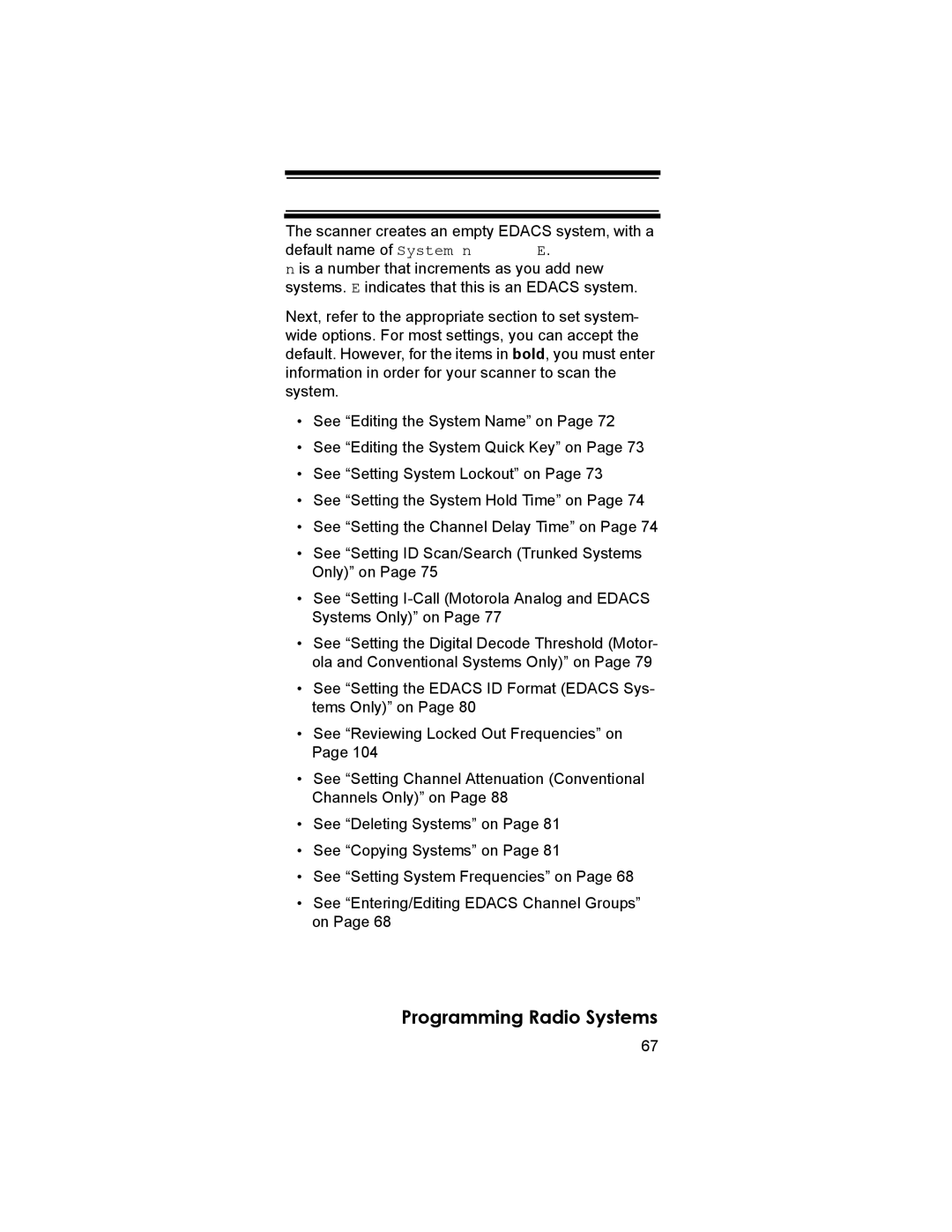The scanner creates an empty EDACS system, with a
default name of System n E.
n is a number that increments as you add new systems. E indicates that this is an EDACS system.
Next, refer to the appropriate section to set system- wide options. For most settings, you can accept the default. However, for the items in bold, you must enter information in order for your scanner to scan the system.
•See “Editing the System Name” on Page 72
•See “Editing the System Quick Key” on Page 73
•See “Setting System Lockout” on Page 73
•See “Setting the System Hold Time” on Page 74
•See “Setting the Channel Delay Time” on Page 74
•See “Setting ID Scan/Search (Trunked Systems Only)” on Page 75
•See “Setting
•See “Setting the Digital Decode Threshold (Motor- ola and Conventional Systems Only)” on Page 79
•See “Setting the EDACS ID Format (EDACS Sys- tems Only)” on Page 80
•See “Reviewing Locked Out Frequencies” on Page 104
•See “Setting Channel Attenuation (Conventional Channels Only)” on Page 88
•See “Deleting Systems” on Page 81
•See “Copying Systems” on Page 81
•See “Setting System Frequencies” on Page 68
•See “Entering/Editing EDACS Channel Groups” on Page 68
Programming Radio Systems
67
